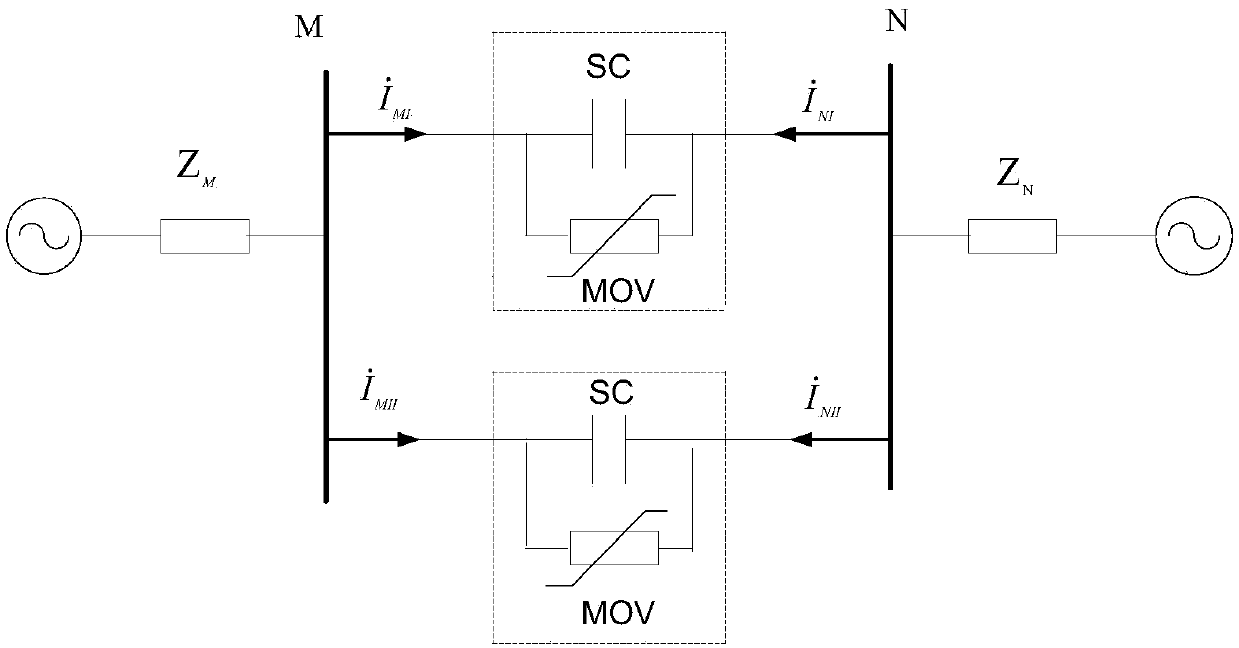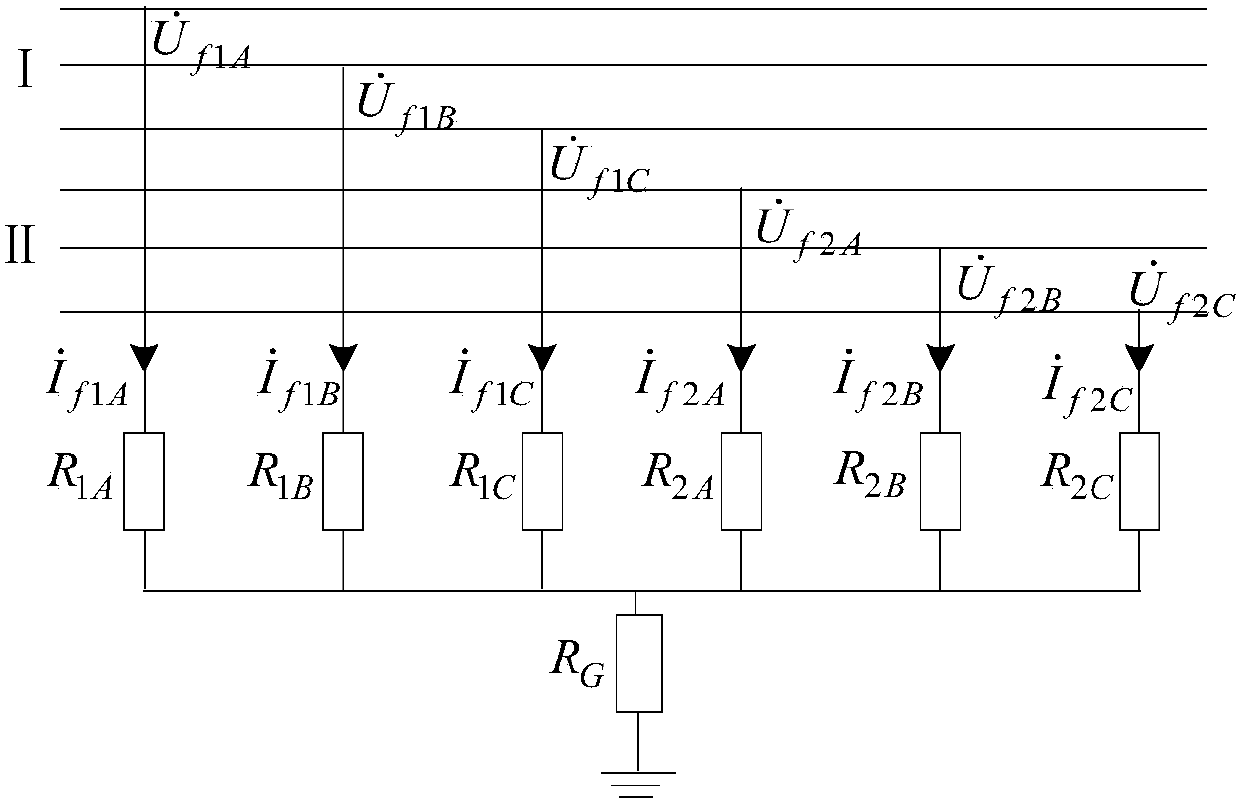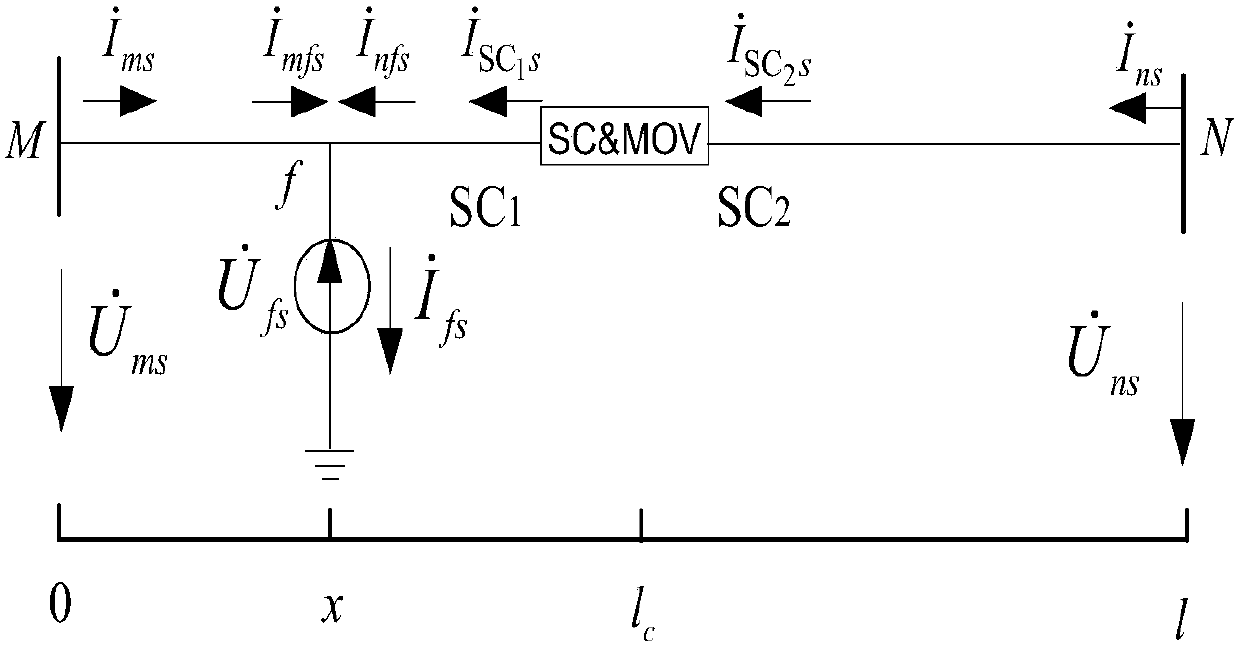Non-synchronous fault location method for parallel double-circuit lines on the same pole with series compensation
A series compensation, fault location technology, applied in the electrical field, can solve the problem of rarely researched double-circuit line, and achieve the effect of simple distance measurement principle
- Summary
- Abstract
- Description
- Claims
- Application Information
AI Technical Summary
Problems solved by technology
Method used
Image
Examples
Embodiment Construction
[0043] The present invention is described in detail below in conjunction with accompanying drawing:
[0044] The distribution parameter model and phase sequence transformation of the double circuit line with series compensation used in the application are explained as follows:
[0045] There are phase-to-phase coupling and line-to-line coupling on the double circuit line on the same pole. When series compensation equipment is installed on the double circuit line, the line can still be decoupled using the six-sequence component method. Considering that the series compensation line is generally long, this paper adopts the distributed parameter line model. figure 1 Among them, SC is the series compensation device, and the metal oxide variable resistor MOV is the main protection; M and N are the busbars on both sides of the system, Z M ,Z N are the system impedances on both sides, respectively; and Respectively, the voltage measured by the protection on both sides of M and N...
PUM
 Login to View More
Login to View More Abstract
Description
Claims
Application Information
 Login to View More
Login to View More - R&D
- Intellectual Property
- Life Sciences
- Materials
- Tech Scout
- Unparalleled Data Quality
- Higher Quality Content
- 60% Fewer Hallucinations
Browse by: Latest US Patents, China's latest patents, Technical Efficacy Thesaurus, Application Domain, Technology Topic, Popular Technical Reports.
© 2025 PatSnap. All rights reserved.Legal|Privacy policy|Modern Slavery Act Transparency Statement|Sitemap|About US| Contact US: help@patsnap.com



